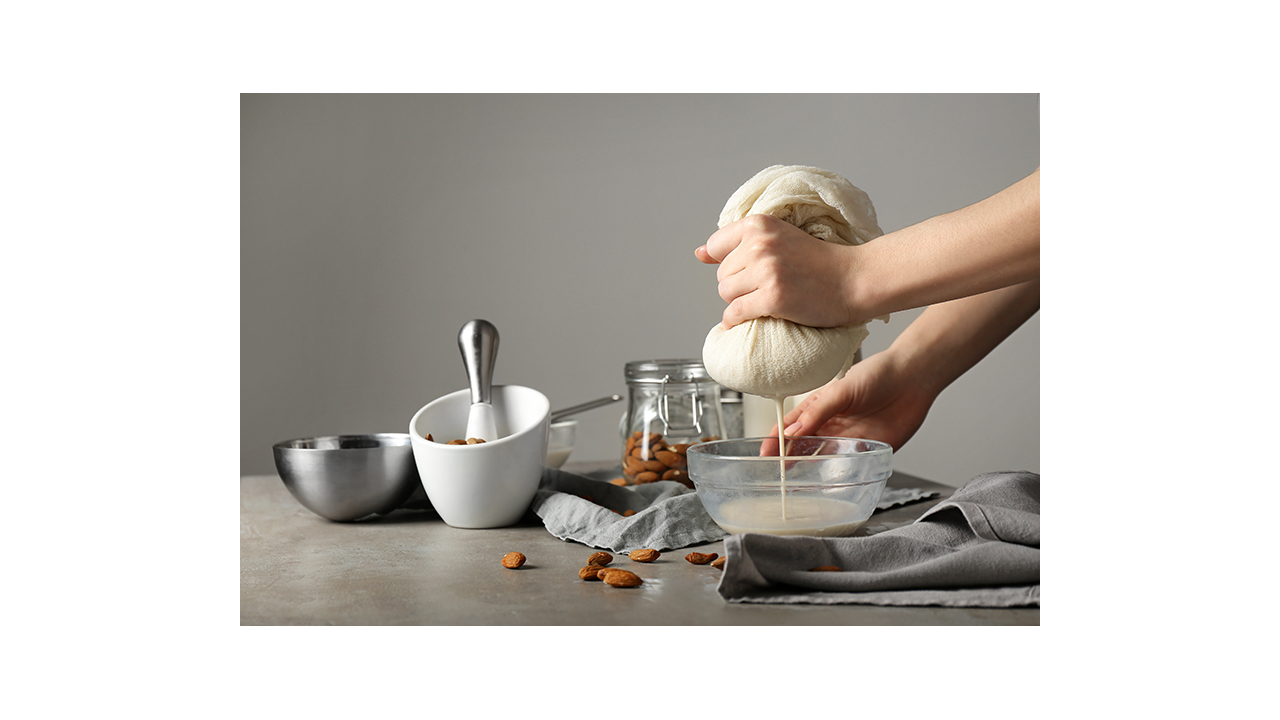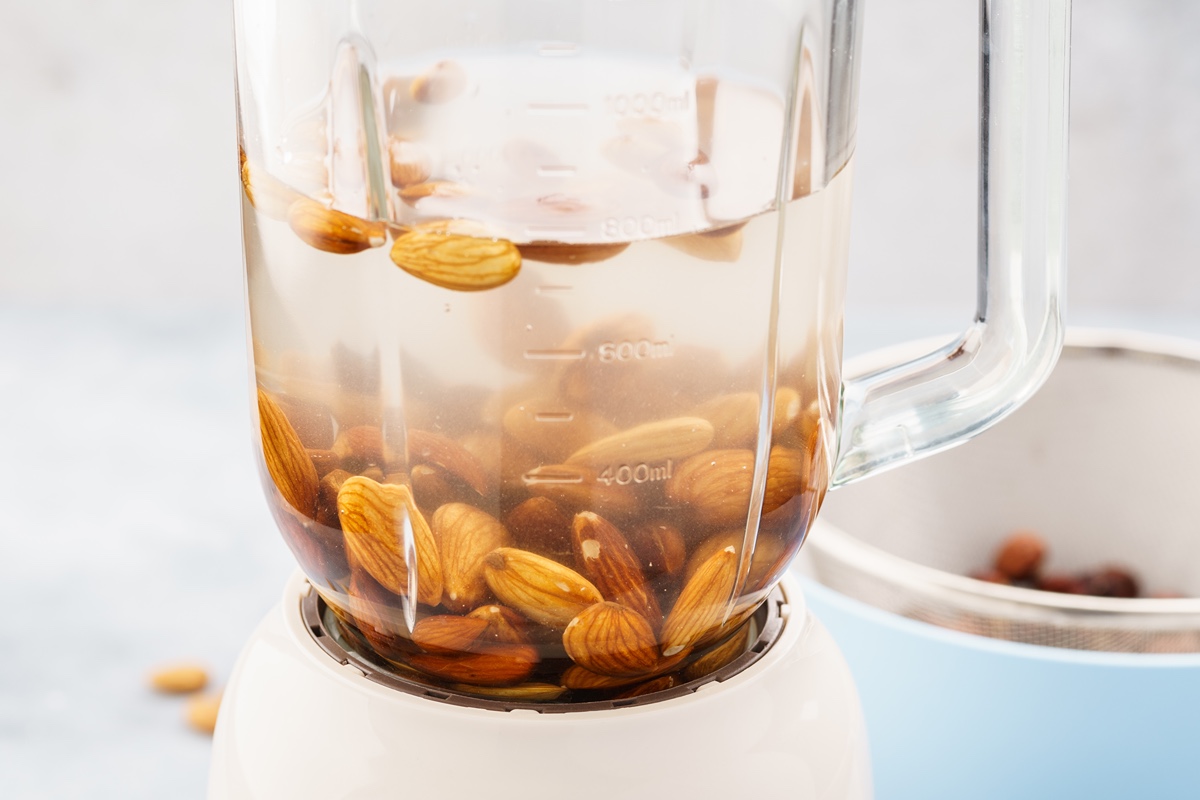
Trio of Journal Articles Highlights Consumer Knowledge Gaps in Safe Preparation Methods
Note: Cross-posting from Purdue University to highlight research collaboration with UC Davis Food Science and Technology (Harris lab) on the food safety of nut-based dairy analogs.
Many consumers know the food safety risks of dairy products, eggs and raw meat. But they are less likely to understand the risks associated with dry goods, including tree nuts such as almonds, cashews, walnuts and pistachios, said Yaohua “Betty” Feng, associate professor of food science at Purdue University.
“We dry food products to extend shelf life, supposing the drying process could limit the growth of bacteria and mold,” Feng said. “However, the extent to which bacteria are eliminated during drying depends on various factors such as the drying method, temperature and duration. That is why dried raw tree nuts, like other raw foods, may harbor bacteria, as drying alone doesn't eliminate all bacteria.”
In the last 10 years, authorities have linked three food poisoning outbreaks in North America to cashew cheese-analog products alone. Plant-based food products, meanwhile, are surging in popularity. Sales of the products topped $7 billion in 2020, an increase of 27%, according to the Plant Based Foods Association.
“More food entrepreneurs are providing trendy new food products to the market, and there is increased interest in plant-based dairy analogs,” Feng noted. “If you go to the supermarket now you can find plant-based yogurt, and people make their own plant-based yogurt at home. It’s an evolving food culture.”
Since last September, Feng and her collaborators have published three studies exploring issues related to tree nut safety. The most recent, “Food Safety Implications of Online Recipes for Preparing Soaked Nuts and Nut-Based Dairy Analogs,” made the cover of the January-February issue of Food Protection Trends. That study was based on a content analysis of more than 500 recipes posted on online blogs and YouTube videos.
The other two papers were based on nearly 1,000 responses to more than 100 survey questions posed to U.S. consumers who had prepared nut-based dairy analogs twice within the previous year.
The first, “U.S. Consumer Practices of Homemade Nut-based Dairy Analogs and Soaked Nuts,” was published in the September 2023 issue of the Journal of Food Protection. This paper presented survey data about how consumers handled tree nuts in their homes and how they prepared nut-based dairy analogs.
The second, “U.S. Consumers’ Tree Nut Food Safety Knowledge, Perceptions, and Handing Practices across Demographic Groups,” was published Nov. 28, 2023, in Foods. This paper presented survey data about the knowledge, risks, benefits and influences on consumers’ tree nut handling practices.
Feng began this line of research as a postdoctoral scientist in the laboratory of Linda Harris, professor of cooperative extension in microbial food safety at the University of California, Davis. They have continued to collaborate since Feng joined the Purdue faculty in 2018.
“The idea for this work stemmed from a trip I took to Australia in 2015. I had seen some commercially prepared almonds that had been soaked and dried,” said Harris, who co-authored the first and third papers linked above. That led her to wonder about the risks of soaking the nuts. Does soaking remove the factor that prevents microbial growth — the lack of water?

Feng, Harris and two colleagues first examined the food safety implications of the popular commercial and at-home practice of soaking and drying almonds before consumption. Their analysis of online blogs and recipes, published by the Journal of Food Protection in 2020, found a lack of information on safe food-handling practices along with risky room-temperature soaking procedures.
The new study, expanded to include cashew, walnut and pistachio recipes, turned up similar issues.
“Consumers nowadays receive information all sorts of different ways,” including TikTok, YouTube and other social media, Feng said. “What you learn from those platforms may not be science-based.” She recommended that consumers seek information from sources such as the Food and Drug Administration, the U.S. Department of Agriculture and Purdue Extension.
An outbreak associated with cashew cheese in 2021 shifted their focus beyond just soaking and drying nuts to ask what people were doing with the soaked nuts besides just eating, or drying them and then eating.
Pathogens, if present, can multiply as tree nuts soak during later preparation of a fermented cashew cheese analog, Harris said. Her recent work with a UC Davis graduate student showed that adding a starter culture reduced but failed to prevent salmonella growth during cashew fermentation.
“Some reasonably simple steps significantly reduce the risk of making these products,” Harris advised. These include soaking under refrigeration, hand-washing and working in a clean environment with clean utensils.
It helps to know if the raw nuts have been treated to reduce salmonella. Some nuts labeled “raw” have been treated, while others with the same label have not.
“Not everybody selling tree nuts chooses to indicate if the product has been treated and there’s no mandate for them to do so,” Harris said.
Scientists often seek concrete, yes or no answers. “But when it comes to food, there is culture, history and preference behind food-handling choices. It's hard to say black and white,” Feng said.
Food scientists do know, however, that bacteria can grow without necessarily making food taste bad or smell bad. “Using the sniff text or the taste does not work,” she said.
Maeve Swinehart, who received her master’s degree in food science at Purdue in 2023, was the lead author of all three publications. Hanna Louvau, a graduate student in food science at UC Davis, was a co-author of the Food Protection Trends paper. Nathan Anderson, a research agricultural engineer at the Food and Drug Administration, was a co-author of the Journal of Food Protection paper. All three studies were partially supported by the U.S. Department of Agriculture’s National Institute of Food and Agriculture.
